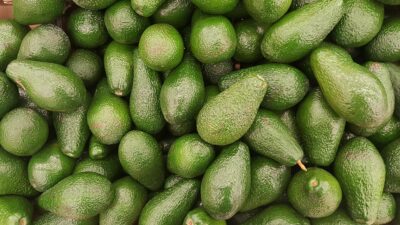As consumers become increasingly aware of their health and the environmental impacts of food production, organic food continues to grow in popularity. The organic food market is evolving rapidly, and several trends are set to shape the landscape in the coming year. Here are some key trends to watch for:
1. Expansion of Organic Offerings
In past years, organic offerings have primarily centered on fruits, vegetables, dairy, and meat. However, in the coming year, expect to see an uptick in organic options across diverse categories, including snacks, beverages, and frozen foods. Brands are increasingly committed to meeting the growing demand for organic processed foods as consumers seek convenience without compromising on health.
2. Sustainable Practices and Transparency
As consumers become more aware of sustainability, brands will need to adopt and communicate their environmental practices clearly. Expect to see companies emphasizing sustainable farming techniques, such as regenerative agriculture, which not only practices organic methods but also aims to improve soil health and biodiversity. Transparency in sourcing and production processes is becoming non-negotiable. Brands that can share their sustainability stories are likely to capture the consumer’s attention.
3. Focus on Plant-Based and Alternative Proteins
The plant-based movement continues to gain traction, with organic food producers looking for innovative ways to incorporate alternative proteins into their offerings. Expect to see an increase in organic plant-based meats, dairy alternatives, and snacks made from legumes, grains, and nuts. This aligns with the growing awareness of the environmental impact of animal agriculture and the push toward more plant-centric diets.
4. Functional Foods on the Rise
Functional foods—those that provide health benefits beyond basic nutrition—are increasingly popular among consumers seeking to enhance their wellness. In 2024, look for organic foods that incorporate functional ingredients such as probiotics, adaptogens, and superfoods. Brands may offer products designed to support immune health, digestive health, and mental well-being, appealing to health-conscious consumers looking for added value in their food choices.
5. Local and Regenerative Sourcing
The local food movement continues to intersect with the organic trend, with more consumers seeking locally sourced organic products. This preference not only supports local economies but often comes with assurances of freshness and flavor. In addition, regenerative sourcing—focusing on practices that restore ecosystems and promote biodiversity—is gaining attention. Brands that communicate their commitment to local communities and regenerative agriculture will resonate with ethically-minded consumers.
6. Increased Accessibility and Affordability
While organic food has historically been considered premium, there’s a growing demand to make these products accessible to a wider audience. In the coming year, brands and retailers will look for ways to reduce costs without compromising quality. This may involve innovative supply chain solutions or partnerships with local farmers to lower transportation costs. Major grocery chains are also expected to expand their organic selections at competitive prices, allowing more consumers to embrace organic options.
7. Diverse Cultural Influences
As the food landscape diversifies, expect to see more organic products that draw from diverse cultural cuisines. As consumers become more adventurous in their eating habits, brands will respond by offering organic ingredients and products that cater to various culinary traditions. This could mean more organic spices, sauces, and ready-to-eat meals inspired by global flavors, appealing to a broader audience.
8. E-commerce Growth in Organic Sales
With the rise of online shopping, e-commerce is set to be a major force driving organic food sales in the coming year. Consumers appreciate the convenience of ordering organic products online, and brands will need to enhance their online presence and distribution channels. Expect innovations in online shopping experiences, such as subscription boxes or personalized recommendations for organic products, to become commonplace.
Conclusion
The organic food landscape is evolving rapidly, driven by consumer demand for healthier, sustainable, and ethically produced food. As new trends emerge, brands that embrace innovation, transparency, and a commitment to sustainability will stand out in a competitive market. Keeping a pulse on these trends will not only guide consumers in their choices but also shape the future of food production in a world that increasingly values health and environmental stewardship.


